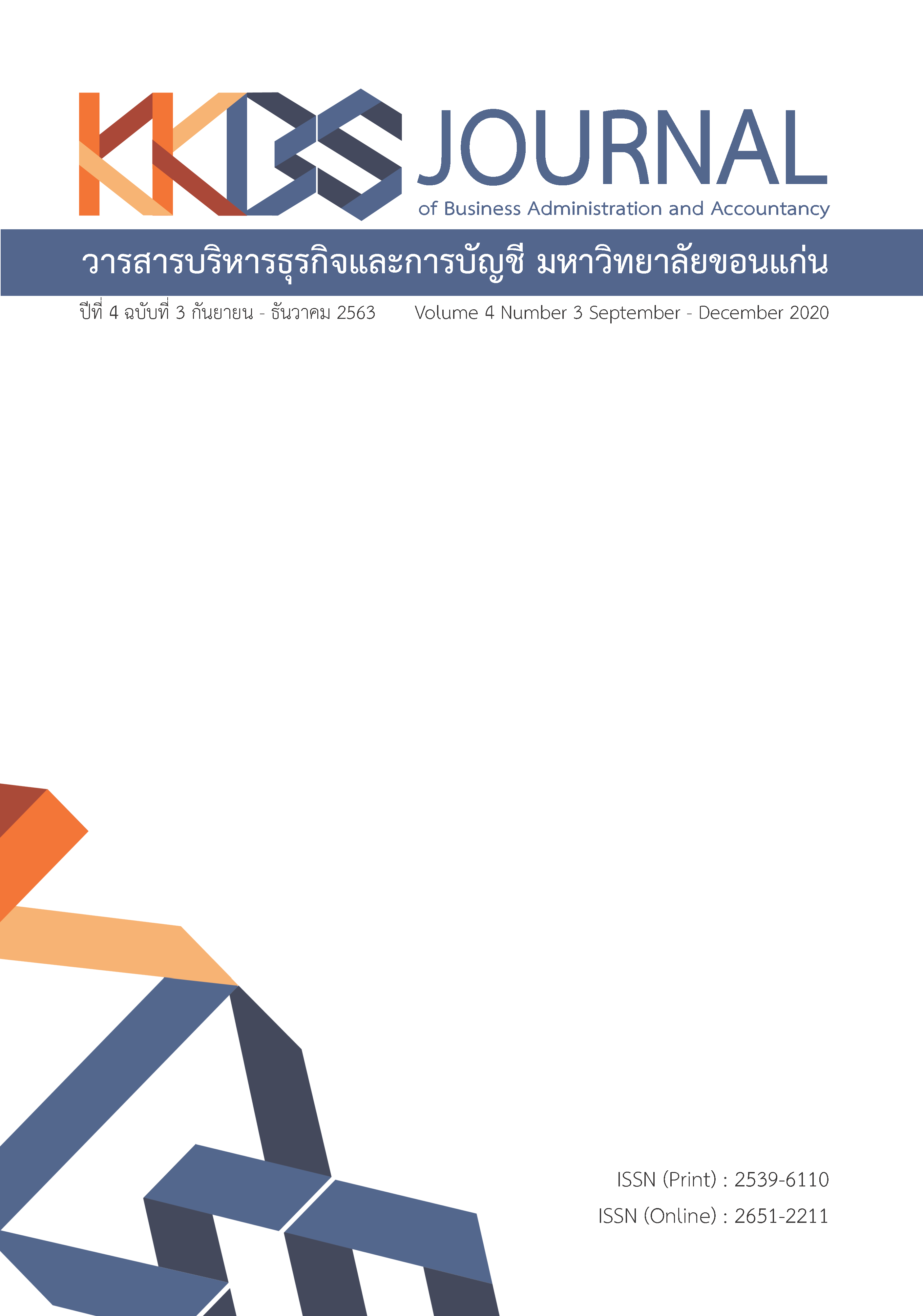The Factors Affecting the Decision to Use the Fitness Center in Bangsean Chonburi
Main Article Content
Abstract
This research aims to study the factors influencing the decision to use the fitness center in Bangsaen, Muang District, Chonburi. This is mixed-methods research. First, in quantitative research, the samples were 361 fitness-center members. Data was collected using a questionnaire. Second, qualitative research uses in-depth interviews with the 5 entrepreneurs or managers of the fitness business center in Bangsaen, Muang District, Chon Buri.
It was found that the composition of the fitness center concerning gym amenities and advertising & PR influenced the decision making to sign up for fitness-center membership a statistical significance level of 0.01.
The qualitative analysis of the marketing management approach for the fitness-center business showed that the entrepreneurs focused on the components of the fitness center in 10 areas, i.e.location, atmosphere and environment, price and promotion, expertise, cleanliness, exercise equipment, workout program, facility, results and expectations, and advertising & PR. The result was in line with the quantitative finding that the major factors affecting the decision making to sign up for fitness-center membership were advertising & PR and gym amenities.
Article Details
The articles published in the journals are the authors' opinions, not the opinion of the editorial team or administrative staff. The articles published is copyright of the Journal of Business Administration and Accounting, Khon Kaen University.
References
Celina, G. (2015). Analysis of member retention in fitness through satisfaction, attributes perception, expectations and well-being. Revista Portuguesa de Marketing, 38(34), 65-76.
Derek, O. (2014). Needs analysis of fitness members and bundling for profile segmentation of the fitness industry. In 2014 Global Marketing Conference at Singapore Proceedings; July 2014. p.1798-1809.
Insuwan, R. (2012). Factors affecting service behavior of consumers in Bangkok toward Ananline Fitness. Bangkok: Srinakharinwirot University. (In Thai)
International Health Racquet and Sports Club Association. (2013). The 2013 IHRSA global report: The state of the health club industry. Boston: IHRSA.
Kasikorn Research Center. (2017). Business trends that will come to a new high in 2017 with business opportunities for SMEs. Retrieved March 17, 2018, from https://www.kasikornbank.com/th/business/sme/KSMEKnowledge/article/KSMEAnalysis/Documents/5BusinessTrendsOf2017.pdf (In Thai)
Kim, C.B. & Cheng, L.T. (2017). The influence of the service quality and outcome quality on the member overall satisfaction. Global Business and Management Research: An International Journal, 9(1), 1-14.
Kotler, P. & Keller, K. (2014). Marketing management. 15th ed. Upper Saddle River, N.J.: Prentice Hall.
Liu, Y. (2013). A study of customer participation motivation service quality and satisfaction of fitness SPA centers in Taiwan. New York: United States Sports Academy.
Melissa, R. (2015). International health racquet & sport club association. Boston: IHRSA.
Moxham, C. & Wiseman, F. (2009). Examining the development, delivery and measurement of service quality in the fitness industry: A case study. Total Quality Management & Business Excellence, 20(5), 467-482.
Musitthimanee, R. (2015). The consumers’expectation toward fitness center services. Chonburi: Faculty of Humanities and Social Sciences, Burapha University. (In Thai)
Nunnally, J.C. (1978). Psychometric theory. 2nd ed. New York: McGraw-Hill.
Pasunon, P. Chaiprathet, N. & Kitthavornpakdee, A. (2015). The behavior and decision to the use fitness a case study of fitness first from Megabangna branch. In National Sustainability in Business Conference, Maejo University; 2-3 July 2015. Chiangmai: The Empress Hotel. p.726-138. (In Thai)
Rongkham, T. & Tantiprapa, P. (2015). Services marketing Mix affecting generation Y consumers towards selecting fitness in Mueang Chiang Mai District. CMU Journal of Business, 1(3), 320-337. (In Thai)
Rauso, D. (2016). The Investigation of client satisfaction level among older adult members of a university based fitness center. Indiana: Indiana University of Pennsylvania.
Salamat, N., Farahani, A. & Salamat, F. (2013). Customer satisfaction in private and public fitness clubs in north of Iran. African Journal of Business Management. Academic Journals, 7(18), 1826-1832.
Saen Suk Municipality. (2017). Introduce the Saen Suk Municipality. Retrieved March 17, 2018, from http://www.saensukcity.go.th/about/introduce-saensuk.html. (In Thai)
Smithikrai, C. (2015). Consumer behavior. 4th ed. Bangkok: Chulalongkorn University. (In Thai)
Solomon, R.M. (2009). Consumer behavior: buying, having, and being. Upper Saddle River, N.J.: Prentice Hall.
Theodorakis, D.N., Afthinos, Y. & Nassis, P. (2005). Customers’ expectations of service in Greek fitness centers Gender, age, type of sport center, and motivation differences. Managing Service Quality, 15(3), 245-258. (In Thai)
Walker et al. (2017). Fitness center service quality model confirmation SQAS-19. Journal of Park and Recreation Administration, 35(4), 49-58.
Yamane, T. (1973). Statistics: An introductory analysis. New York: Harper International.


